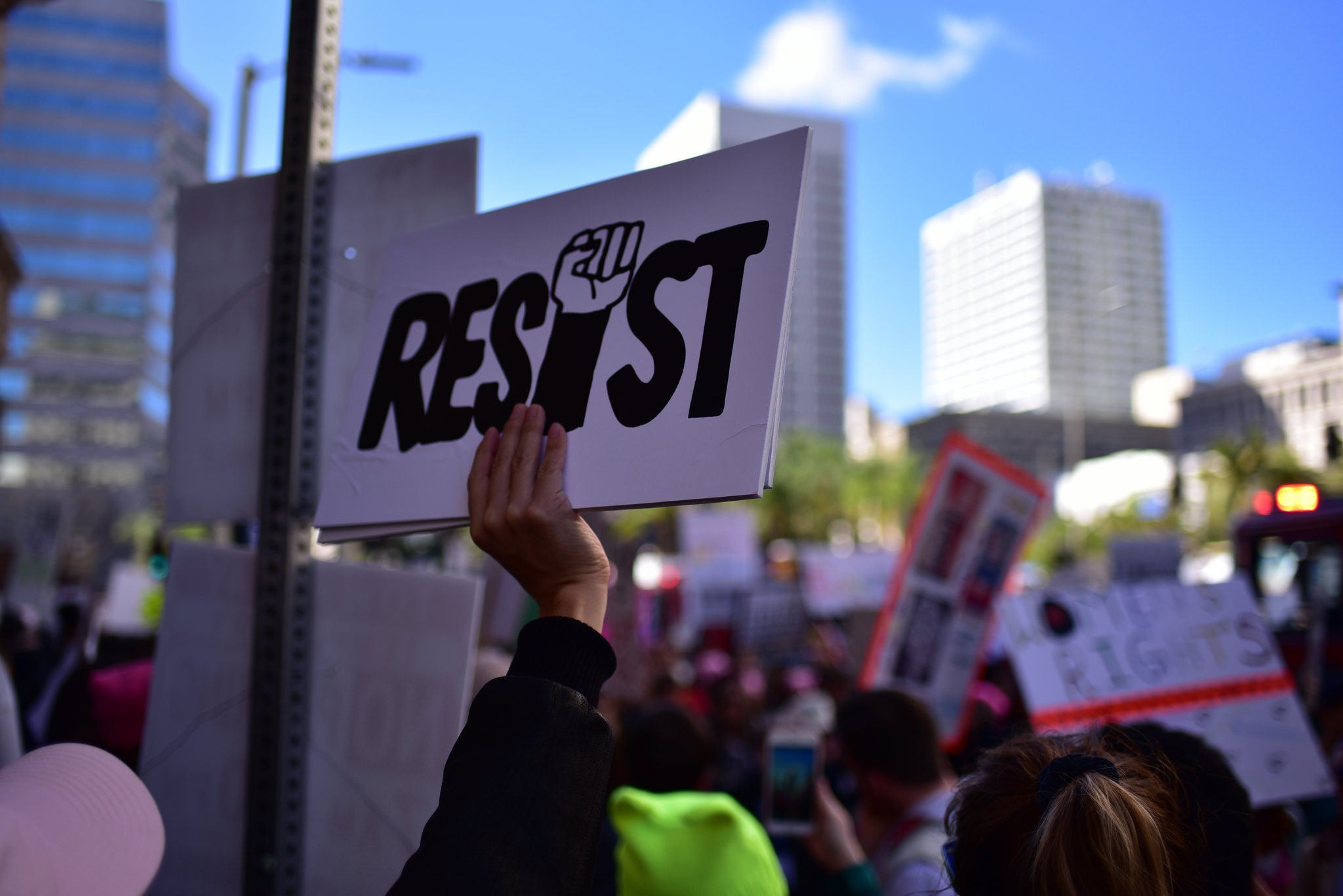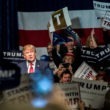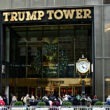On October 15, 1969, more than two million people in dozens of cities across the United States participated in a day of marches, vigils, and teach-ins against the Vietnam War. The Moratorium to End the War in Vietnam was the largest nationwide protest in U.S. history at the time, and it signaled to President Nixon that the anti-war movement had mainstream support and could no longer be considered a marginal movement of a few thousand radicals and hippies.
Forty-eight years later, as 3.3 million women marched last Saturday in 500 locations nation-wide, including unlikely places like Roanoke, Virginia, and Omaha, Nebraska, I couldn’t help but compare the 2017 Women’s March on Washington to the 1969 Moratorium. Like the Moratorium, the numbers of Women’s March participants far exceeded expectations, and protests took place in regions of our country that rarely host left-leaning political demonstrations.
The 1969 Moratorium took two months to plan with ol’ fashioned communication tools like telephone trees, mass mailings, and newspaper advertisements. With the help of social media the Women’s March went viral. The Moratorium’s big turnout in red states and with people of all ages and economic backgrounds suggested to the Nixon administration that it had a growing mass movement to contend with. Nixon spent most of late 1969 and 1970 cowering inside the White House pretending to watch football on TV, while chanting, sign-waving protesters heckled him from outside the White House fence on Pennsylvania Avenue. By May of 1970, following the Kent State shootings, protests in Washington, D.C., had grown so large and angry that the 82nd Airborne was deployed inside the Executive Office Building, and hundreds of school buses literally barricaded the White House grounds. “If you didn’t experience it back then, you would have no idea how close we were, as a country, to revolution,” Nixon aide Stephen Bull told me.
At the end of last week’s Women’s March, hundreds of thousands of men, women, and children wearing knitted pink pussy (cat) hats exited the Mall and poured up 15th street, next to the Treasury Building and just one block from the East Wing of the White House, chanting at the top of their lungs, “Hey Ho, Hey Ho Donald Trump has got to go!” I wondered, could Trump and the White House staff hear these mocking chants? Could they see the colorful “Free Melania,” “Lock him up,” and “Women’s rights are human rights” signs waving in the distance at the edge of the Ellipse? Only 24 hours after his swearing-in, the 45th president was publicly pilloried in Nixon-era-like protests. As one veteran sixties agitator predicted after spending the day at the march in Washington, “Trump is our new Vietnam.”
“This was just one demonstration. But we make progress when we organize when times are the most difficult.”
I don’t think anyone under 65 could have imagined how moving it would be to be part of a huge crowd of people uniting against a common foe. Born in 1963, I had only read and written about what it felt like to be part of a movement. Not until I was swept up in the jubilant, peaceful, purposeful crowd on the Mall on January 20 did I discover how empowering it is to share political opinions with hundreds of thousands of complete strangers and be a bit player in participatory democracy.
“It was fantastic and inspiring and it made us feel like this is the beginning of the resistance,” veteran activist and organizer Heather Booth told me at the Women’s March. “If people find the way to refocus this energy, it can be the beginning of people rising up.” Sam Brown, one of the four members of the 1969 Vietnam Moratorium Committee, told me that marching in Key West, Florida “was the first moment of uplift I felt since I crawled under the covers and hid my head on November 8th.”
All of the former sixties movement leaders whom I spoke to agreed that today’s protesters need to learn from the successes and mistakes of their predecessors. “The New Left forgot power, or we thought that power was going to fall into place somehow automatically,” former SDS and Weather Underground leader Mark Rudd told me. “We thought the liberals would take power and we would be to the left of them. But that’s not what happened. What happened was a far-right reaction took place. . . .” Rudd acknowledges that the backlash from the Republican right was in part a reaction to how violent and ideologically extreme some parts of the antiwar left, like the Weather Underground, had become. Today Rudd is trying to build movements, not bombs. “We need to build mass movements around specific issues—global warming, income inequality, women’s reproductive rights, etcetera, and use the power of the mass movements to overwhelm and transform the Democratic Party into a party of the people. Here in Albuquerque we’re organizing like little bunnies.”
“This was just one demonstration. But we make progress when we organize when times are the most difficult,” said Booth, who was a young activist during the Mississippi Freedom Summer in 1964. “That’s when you expose what the opposition is really doing. The three things we need to do next is focus on unity and standing with those who have come under the greatest fire, hold Trump accountable to what he has said and expose his lies, and organize deeply for the long haul, both in communities of color as well as the white working-class. Unity, accountability, and organizing.”
The problem with taking the time to organize locally (as the Tea Party did) by electing Democrats to school boards, city councils, state legislatures, governors, is it will take years to put into place. “I think the incrementalism of it is not adequate to the challenge,” Sam Brown told me. “We need a national movement, but one sufficiently rooted in non-urban areas that we can change the tide more quickly. But a sense of urgency is not a substitute for a thoughtful strategy. I am reminded that in 1969 we, people from the anti-war movement, spent months focusing on the most effective way to reach middle America and involve them locally.” Brown is hoping that someone on the front lines of the Trump resistance will discover how to include and engage people in middle America the way he and his Clean for Gene colleagues did in October, 1969. “In the meantime, I will keep focused on the things I can do, and listening for that thoughtful idea that we can all follow.”
Clara Bingham is the author of Witness to the Revolution: Radicals, Resisters, Vets, Hippies, and the Year America Lost Its Mind and Found Its Soul (Random House 2016).







A new Progressive Party will not take shape until there is a formal declaration that a highly progressive tax code is necessary to protect American democracy and stop the flow of money to the top one percent.